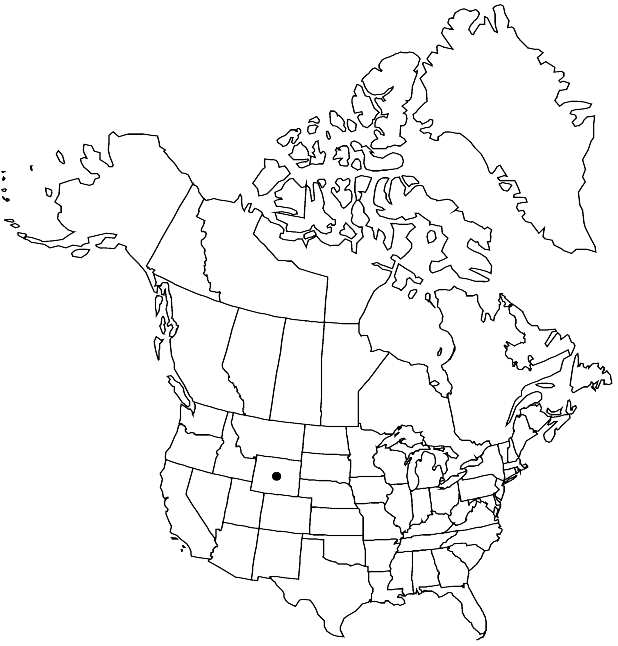Boechera williamsii
Vasc. Pl. Wyoming ed. 3, 376. 2001.
Perennials; short-lived; sexual; caudex not woody. Stems usually 1 per caudex branch, arising from center of rosette near ground surface, 0.7–2.2 dm, glabrous throughout. Basal leaves: blade oblanceolate, 1–2 mm wide, margins entire, ciliate near petiole base, trichomes (simple), to 0.4 mm, surfaces sparsely to densely pubescent, trichomes short-stalked, 4–8-rayed, 0.03–0.1 mm. Cauline leaves: 6–11, sometimes concealing stem proximally; blade auricles to 0.5 mm, surfaces of distalmost leaves glabrous. Racemes 5–17-flowered, unbranched. Fruiting pedicels erect, straight, 2–4(–7) mm, glabrous. Flowers erect at anthesis; sepals glabrous; petals white, 3–4 × 0.5–0.8 mm, glabrous; pollen ellipsoid. Fruits erect, usually appressed to rachis, not secund, straight, edges parallel, 2–3.5 cm × 2.2–2.5 mm; valves glabrous; ovules 60–96 per ovary; style 0.05–0.2 mm. Seeds sub-biseriate, 0.7–0.9 × 0.5–0.6 mm, not winged or minutely winged distally.
Phenology: Flowering May–Jun.
Habitat: Gravelly soil in sagebrush-grassland communities
Elevation: 2300-2800 m
Distribution

Wyo.
Discussion
Boechera williamsii is distinguished from all other sexual species of the genus by its combination of relatively short (3–4 mm), white petals, minute, 4–8-rayed trichomes on basal leaves, erect, appressed fruits, and relatively small, wingless seeds. It is known only from Fremont and Sublette counties in west-central Wyoming. The taxon traditionally treated as Arabis (Boechera) williamsii var. saximontana is here recognized as an apomictic species of hybrid origin (see M. D. Windham and I. A. Al-Shehbaz 2007b for detailed comparison).
Selected References
None.